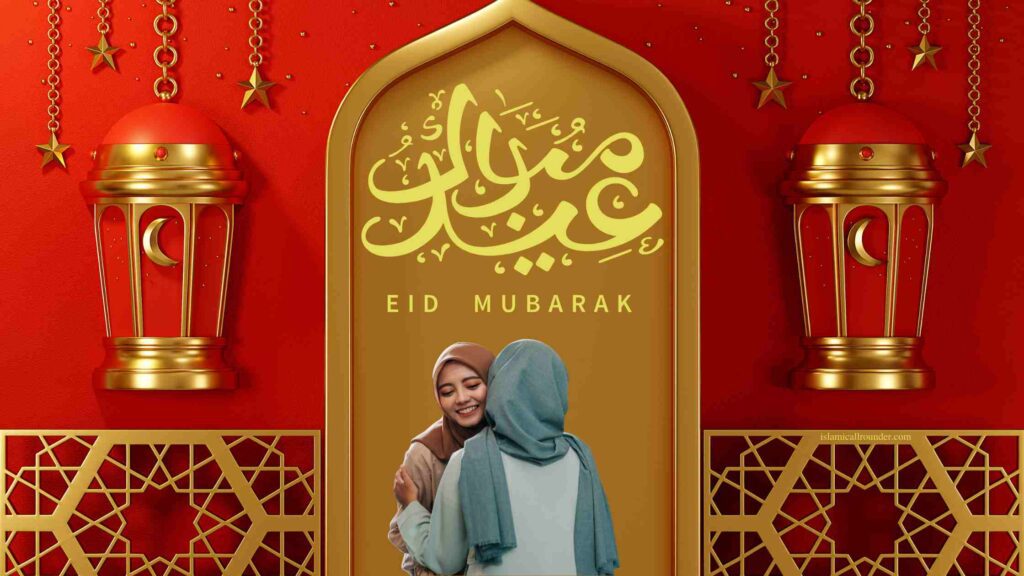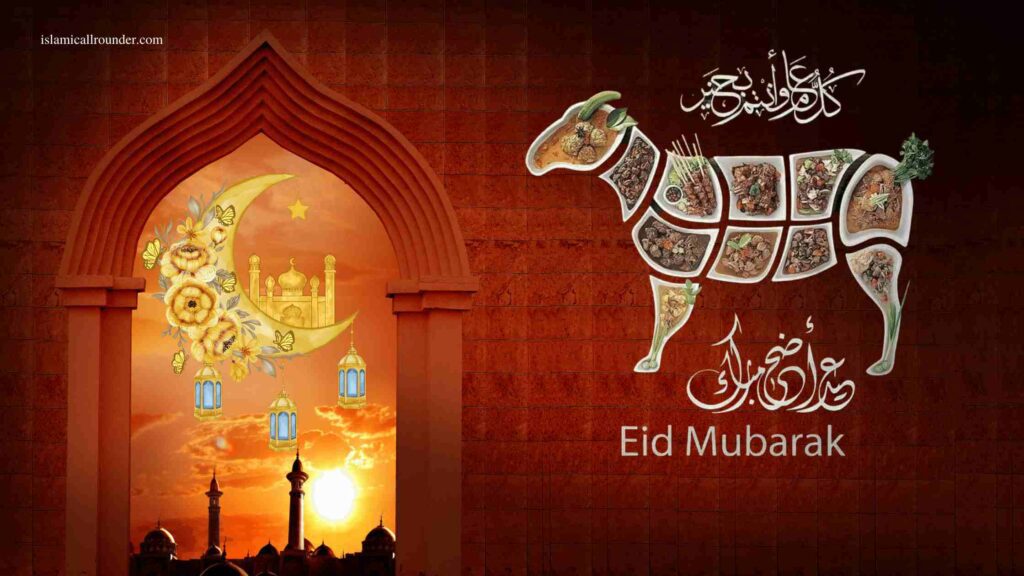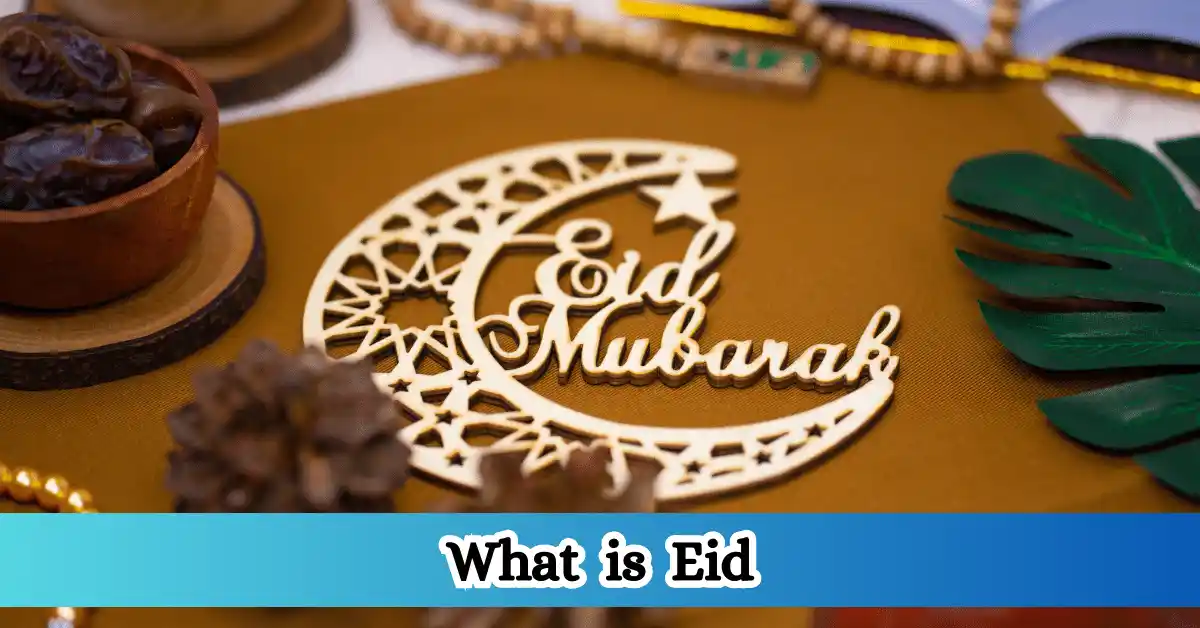Eid is an Arabic word meaning “day of return.” Since these occasions of happiness come every year, they are called Eid. Every religion and nation has a few festivals, allowing people to express their joy collectively.
These festivals usually include sports and entertainment programs and religious rituals. However, it has been observed that sometimes social traditions and moral boundaries are not taken into consideration in the expression of happiness, and every method is considered permissible for the attainment of happiness and the expression of pride and arrogance.
What is Eid: A Celebration of Faith and Unity
Two national festivals have been fixed for the people of Islam:
- Eid al fitr
- Eid-ul-Adha
Eid Al Fitr in Shawwal and Eid al Adha in Dhu al-Hijjah. Holiday Muslims celebrated me after the month of Ramadan.
Eid ul Fitr

The day of Eid al Fitr has been fixed for the bestowal of the great blessings of Ramadan, for the expression of happiness, and for the prostration of thanks for the ability to fast for the sake of Allah.
According to the narration of Hazrat Anas (RA), when the Holy Prophet (PBUH) visited Madinah at the time of Hijra, the people of Madinah had fixed two annual days in which they used to play sports. The Hazrat Muhammad(PBUH) said: What are these days?
People said: This is the custom of our Jahili era; these days, we celebrate. The Holy Prophet (saws) said: “Allah Almighty has given you two better days in return for these two days—namely, Eid fitr and Eid-ul-Adha.
In these Eid festivals, decent joy and serious entertainment were added instead of rituals and frivolous games. Although Islam, to some extent, considered these two occasions as happy days, unlike other nations, Muslims considered them a day of thanksgiving and renewal.
See Related:
Eid ul Adha

Eid-Al-Adha means the Eid of Sacrifice. On this day, Muslims slaughter animals to please their Lord. This day commemorates the great sacrifice of Prophet Ibrahim (peace be upon him). Animal sacrifice was ordered on this day to keep the spirit of self-sacrifice alive among the people.
Praying on the morning of Eid-ul-Adha and slaughtering animals are both manifestations of this fact. Prayer and sacrifice are both covenants.
We are determined to sacrifice our interests and desires for the sake of Allah Almighty. Embracing and congratulating each other after the prayers is an unparalleled practical demonstration of Islam’s unity, mutual love and glory.
What is Eid?
Hazrat Ayesha Siddiqah (may Allah be pleased with her) says that when Hazrat Abo Bakar (MAPH) came, two daughters of Ansar were reciting poems with Tarnam.
Among them was the bravery the Ansar showed in the Battle of Ba’ath. She says that she was not a singer. Hazrat Abo Bakar (MAPH)said: Is there a devil in the house of Hazrat Muhammad(PBUH)? And this is the day of Eid. The Hazrat Muhammad(PBUH) said: Ya Abu Bakar! There would be a happy day for every nation, and this is our happy day.
It is narrated from Hazrat Jabir bin Abdullah that Adhan is not said for Eid-ul-Fitr and Eid-ul-Adha.
Hazrat Jabir bin Samurah (MAPH) said he had often offered Eid prayers with Hazrat Muhammad(PBUH) without Adhan and iqamah.
Hazrat Ibn Abbas (RA) sent a man to Hazrat Ibn Zubair (giving this message). At the same time, allegiance was being taken for them. That Adhan is not said for Eid-al-Fitar and the last Khutba.
How to perform Eid prayers
Eid al fitr and Eid-ul-Adha prayers are obligatory on every person who is obliged to perform Jumu’ah. Eid is a prayer of two rak’ats. The method of Eid prayers is the same as that of other prayers. The only difference is that six more takbeers are said in Eid prayers.
Imam Takbir should recite Sana after Tahrimah, then raise his hand and say three Takbirs. After the third Takbir, he should tie his hands under his navel. Muqtadi should do the same.
Then the Imam should recite aloud after tawaz and tasmiyyah. After recitation, bow and prostrate as usual. Then, the second rak’ah will begin.
The Imam should recite, raise his hand three times after recitation, and say takbeer. The follower should do the same with the Imam. The fourth time, the Imam should bow the takbeer without raising his hand. The follower should also do the same. Thus, two rak’ats of prayer will be completed.
Eid prayers for women
Islam does not make Friday prayers and Eid obligatory on women. A woman should pray within the walls of her house. However, if it is helpful to go to the mosque for education and training, then it is permissible. Such arrangements are made in most Muslim countries, especially in Arab countries like Indonesia, Malaysia, India, and Europe.
It is makruh for women to offer separate Eid prayers under a woman’s leadership. If read, it will be done. The procedure is as follows:
- The woman leading the procession should stand in the middle of the general row.
- The sound of recitation did not reach the non-mahram.
- It is correct for women to recite sermons in front of women.
Eid prayers were not offered.
If a person cannot perform the Eid prayer behind the Imam or if it becomes invalid, he will not perform it again. If that person wants, he can recite four rak’ats of Chasht prayers without additional takbeers.
Surah Al-Fatih’ah should accompany the first rak’ah with Surah Al-A’la second rak’ah with Al-Duha, the third with Surah Al-Ansharah and the fourth with Surah Al-Tin.
The day of Eid is a day of expression of happiness and reunion. The virtue of worship performed on the night of Eid is many times greater than the worship performed on ordinary days.
Whoever stays up on the nights of Both Eid with the intention of worship, his heart will not die even on the day when all hearts will die.
Frequently Asked Questions
What are the differences between Eid al-Fitr and Eid al-Adha?
Eid al-Fitr marks the end of Ramadan, the Islamic holy month of fasting, while Eid al-Adha commemorates Prophet Ibrahim’s willingness to sacrifice his son as a test of his faith. Eid al-Fitr is celebrated for one to three days, while Eid al-Adha lasts four days.
Are there any additional customs or traditions during Eid al-Fitr?
Yes, there are several additional customs and traditions during Eid al-Fitr. These include visiting family and friends, attending communal prayers, and reciting special prayers and verses from the Quran.
Are any specific gifts or sweets typically exchanged during Eid al-Fitr?
Yes, some several specific gifts and sweets are typically exchanged during Eid al-Fitr. These include dates, nuts, dried fruits, and desserts such as Kheer, Muffin, or other sweets.
What are the most critical aspects of Eid al-Adha, and what do the different animal sacrifices symbolize?
The most critical aspects of Eid al-Adha are the sacrifice of an animal, such as a goat, sheep, or camel, and the sharing of the meat among family members and friends. The animal sacrifice symbolizes Prophet Ibrahim’s willingness to sacrifice his son, and the sharing of the meat represents the spirit of generosity and unity.
What is the significance of Burqa al-Adha in Eid al-Adha traditions?
Burqa al-Adha is a traditional dress worn by women during Eid al-Adha. It is typically black or dark and symbolizes modesty, dignity, and respect. The burqa al-Adha is also a way for women to express their faith and participate in the festivities of Eid al-Adha.
